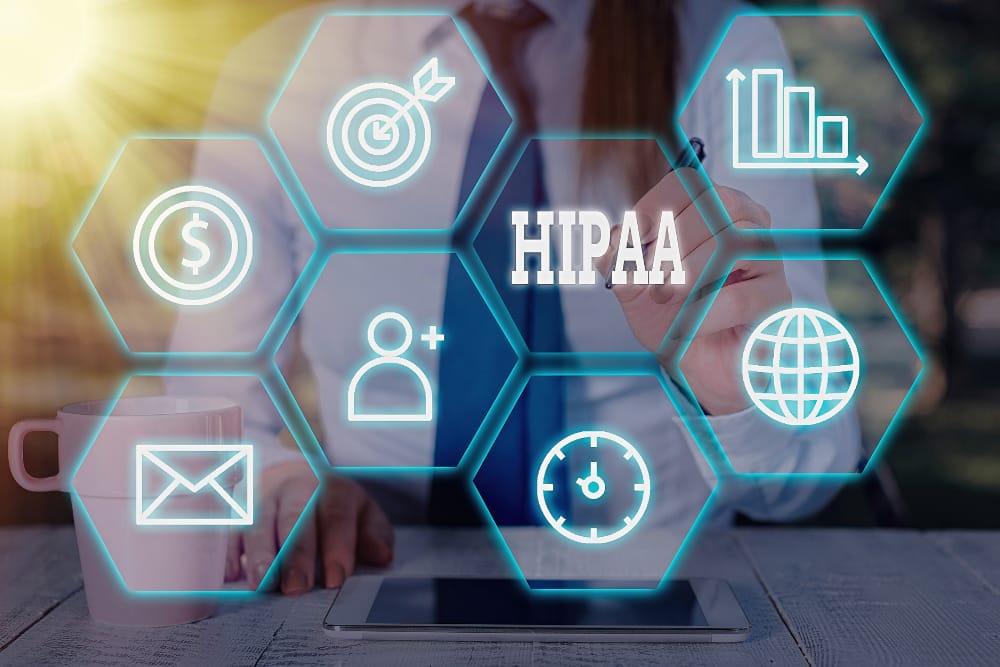Ensuring the security and privacy of electronic protected health information (ePHI) is a critical, though challenging, requirement introduced by the Health Insurance Portability and Accountability Act (HIPAA).
Originally signed into federal law in 1996 primarily to address limitations in healthcare insurance coverage, HIPAA’s scope has changed over the past three decades. Driven by technological advancements, its primary focus has shifted to safeguarding the integrity and confidentiality of patient records.
To achieve this, the U.S. Department of Health and Human Services (HHS) enforces a comprehensive set of physical, administrative, and technical safeguards, and upholds the Privacy Rule, Security Rule, and Omnibus Rule amendments.
Enforcing Compliance Through HIPAA Auditing
The purpose of HIPAA Auditing is to verify that covered entities (CE), such as healthcare providers, clearinghouses, and health plans, as well as their business associates (BA), such as IT hosting providers (or any subcontractor that handles PHI), strictly comply with the rules and regulations of HIPAA.
Responsible for enforcing HIPAA rules, the HHS and Office of Civil Rights (OCR) conduct official compliance audits. Auditors scrutinize adherence to items like PHI disclosure, compliance documentation, risk analysis, access controls, and security awareness. The OCR also investigates how data breaches occur and are reported by covered entities.
Traditionally, HIPAA auditing has involved countless hours of manual effort. Thankfully, this requirement is changing now that AI technologies are being introduced into the HIPAA compliance auditing process.
Let’s now look at some of the positive ways AI has impacted HIPAA auditing.
AI and HIPAA Auditing
It’s unlikely that AI will completely take over HIPAA auditing, given the necessity of human reasoning for comprehensive risk assessment. However, AI can offer valuable support in different ways.
Risk Analysis
AI is great at detecting risk, especially when it comes to cybersecurity. Having access to a set of specialized tools that have AI capabilities built in can offer an advantage. There are typically three types that help with Risk Analysis:
- Vulnerability Scanners that have AI built in to inspect the configuration management of your servers.
- User and Entity Behavior Analytics (UEBA) platforms that have machine learning built in are used to establish a baseline of how your users behave, The tools will then alert when deviations are detected (such as compromised accounts).
- Threat Intelligence Platforms that use AI to correlate internal activity with known threats and vulnerabilities.
These tools can detect high-risk areas of non-compliance, such as security flaws in software, weak passwords, over-privileged users, etc. Identifying risk early helps healthcare organizations prioritize remediation, and it’s very helpful for identifying weak endpoints, which in turn helps managers understand where to invest in their technology.
Automated Logging
AI excels at processing huge datasets of unstructured data, such as security logs that gather detailed information on access, IT systems, and networking. It’s extremely challenging for humans to go through all of the data, but AI makes this process very simple.
Using AI-powered Security Information and Event Management (SIEM) systems is a great method for detecting anomalies or unexpected patterns in data. They can even detect suspicious logins and alert accordingly.
Spotting an unauthorized access attempt can immediately identify a potential breach or non-compliance issue. To that end, AI anomaly and pattern detection streamlines the risk analysis process and gives engineers the information needed to fix critical issues.
Continuous Monitoring
Similarly, AI excels in round-the-clock monitoring of key systems, tracking user activity, the types of files being accessed, and monitoring how data flows around the network. Thresholds can be set and alerts triggered when anomalies are detected, which can in turn be sent to a human to investigate.
ePHI Identification
One of the hardest parts of HIPAA compliance involves two key tasks: identifying which data is subject to the regulation, and then diligently tracking that data, including its modifications and access history.
This is achieved by automated scanning of data sources (databases, files, emails, etc). AI Natural Language Processing (NLP) is used to identify PHI indicators such as names, social security numbers, and PHI images. It then categorizes the results and attempts to add context to the search results.
Importantly, AI can be used to track in-scope data. AI knows when PHI was created, changed, and deleted; it can automatically track who has accessed the data and whether it was edited or updated.
When you consider the speed and scale that AI can work at, ePHI identification can be a game-changer in the HIPAA Auditing process.
Will AI Ever Replace Humans in HIPAA Auditing?
The simple answer is no, not yet. It’s impossible to predict where the technology will be in 10 or 20 years, but at the moment, the human factor is still completely integral. There are several reasons for this:
- Understanding Context: AI is effective at flagging anomalies in HIPAA auditing, but a human is needed to understand the business context and determine if the risk is acceptable, or if action has to be taken.
- Ability to Make a Judgment: AI is fantastic at processing countle
- ss volumes of data, but a human is needed to understand the significance of the interpreted data. Humans can make decisions based on experience and understanding.
- Complexity: When issues are flagged in a HIPAA audit (often by an AI-trained application), humans are needed to investigate a complex case, tasks such as reviewing policy, conducting interviews thinking of the bigger picture are all needed.
- Making a Strategic Call: The purpose of a HIPAA audit is to protect patient data. The audit is a way to check that the systems in place are working correctly, humans are still needed to prioritize actions on remediation, and AI may struggle to do this effectively.
To wrap up, it’s clear to see that AI helps immensely in HIPAA Auditing, especially when it comes to managing large data sets and putting systems in place to uphold data integrity. AI and humans work side by side to work smarter, faster and more intelligently.

Marty Puranik
Marty Puranik is the founder, president, and CEO of Atlantic.Net, a global leader in cloud hosting and managed services headquartered in Orlando, Florida. Puranik co-founded Atlantic.Net in 1994; his early vision and technical acumen helped transform the company from one of Florida’s first commercial ISPs into a recognized innovator in cloud computing, with a presence in eight data centers across four countries and customers in more than 100 nations. Puranik has steered the company through significant industry shifts, leading 16 acquisitions and pivoting from dial-up Internet to advanced cloud and AI-powered solutions. Atlantic.Net is now renowned for its secure, healthcare-compliant, 24 / 7 live customer service and cost-effective cloud infrastructure, serving a diverse global client base. His leadership style blends strategic foresight with a hands-on approach, emphasizing thrift, discipline, and customer-centric innovation. He is a University of Florida Alumni Hall of Fame inductee and a finalist for the Ernst & Young Entrepreneur of the Year Award.







